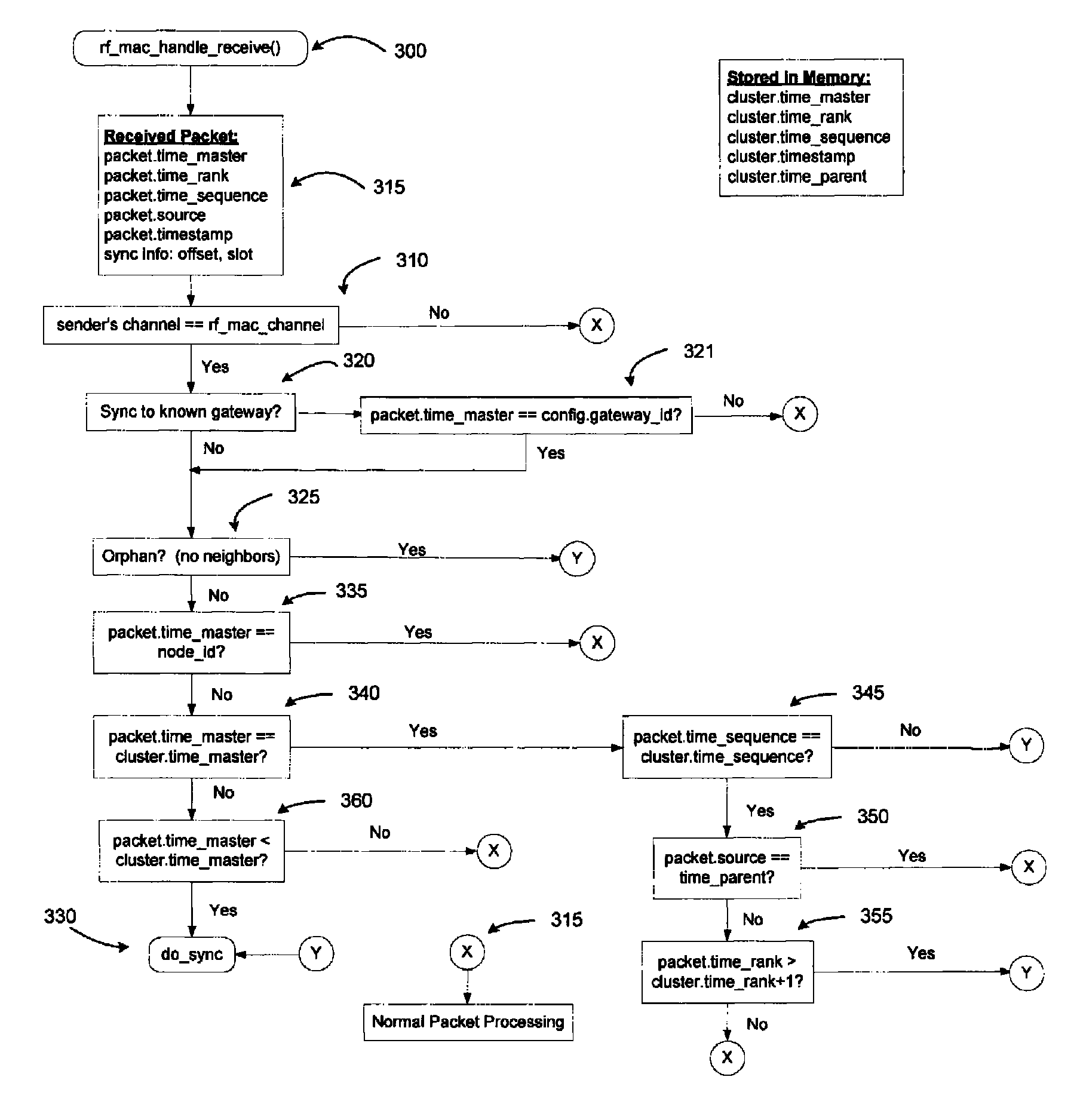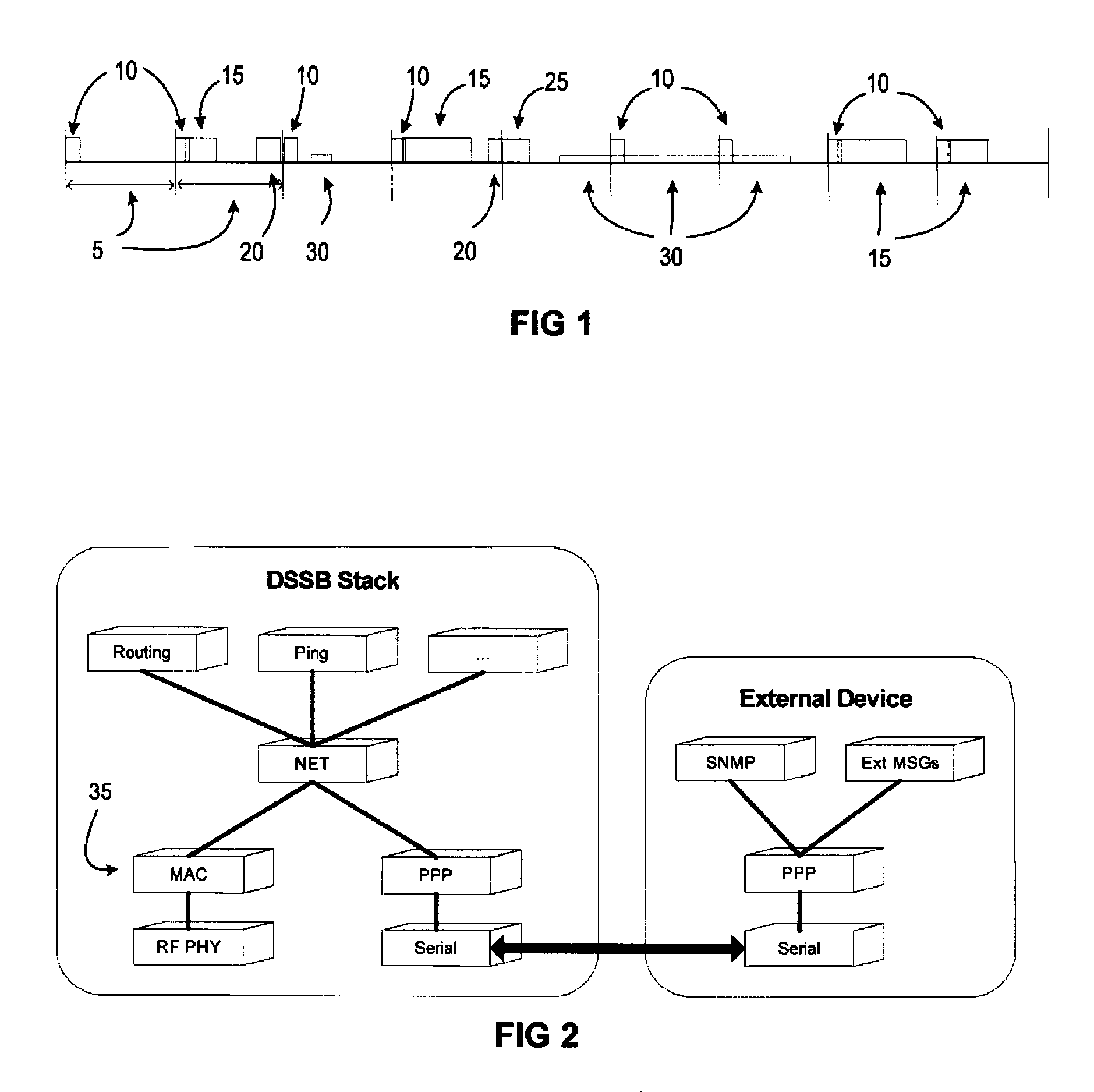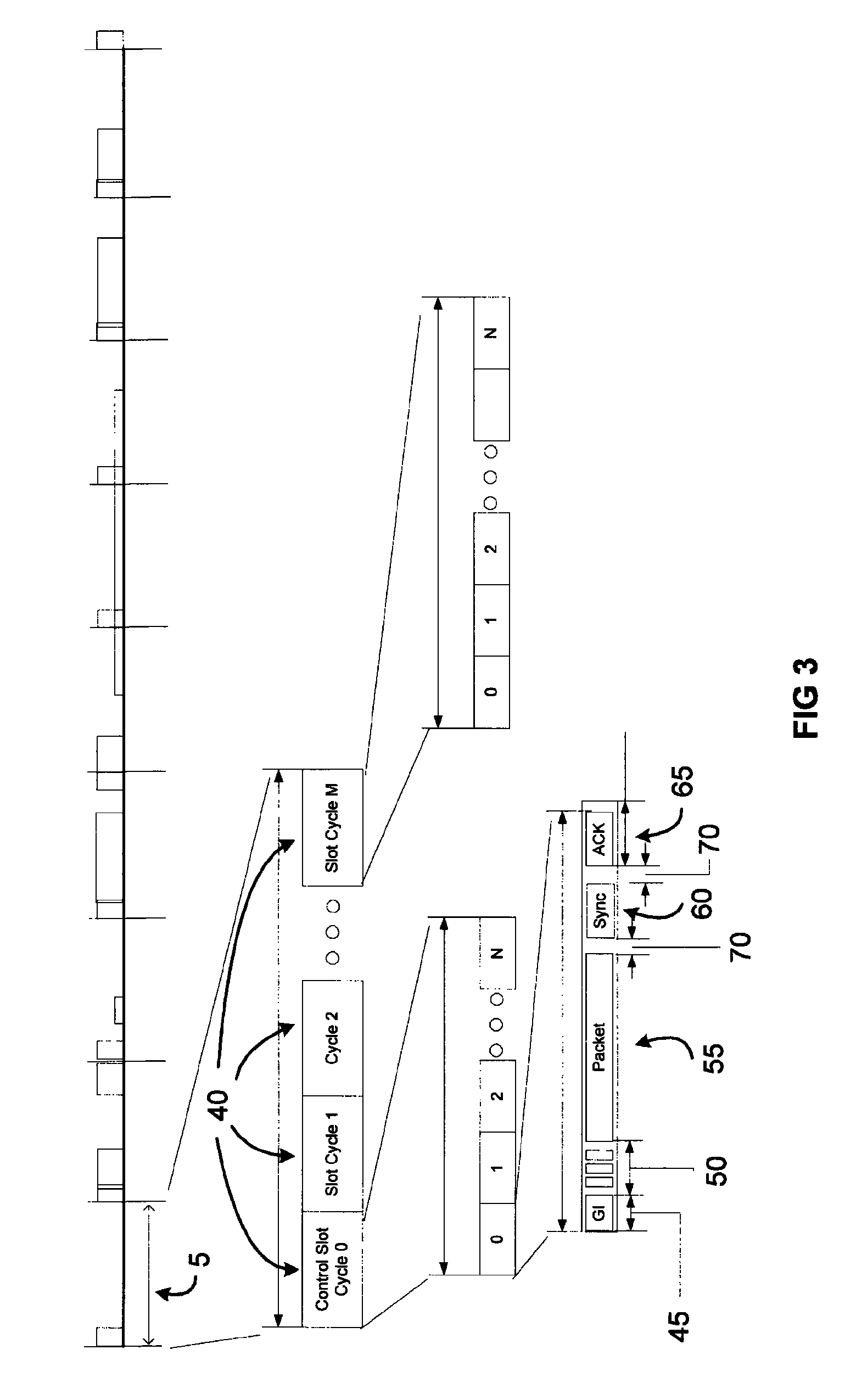Distributed ad hoc network protocol using synchronous shared beacon signaling
a shared beacon and network protocol technology, applied in the direction of synchronisation arrangement, network topologies, electrical appliances, etc., can solve the problems of single point of failure, limit the scalability of the network of larger deployments, and existing standards are not fully designed to operate in an autonomous mod
- Summary
- Abstract
- Description
- Claims
- Application Information
AI Technical Summary
Benefits of technology
Problems solved by technology
Method used
Image
Examples
Embodiment Construction
[0050]The Distributed Synchronous Shared Beaconing (DSSB) protocol for wireless ad-hoc networking of this invention operates within a framework comprised of at least one superframe time interval 5, each of which is of equal duration and during each of which one or more of five primary categories of activities occur in designated time slots, as shown in FIG. 1 and further explained below. In first category 10, periodic active data exchanges occur, while in second category 15, extended data exchanges for reducing latency in sleep mode operation occur. Guaranteed time slots for dedicated bandwidth and quality of service are provided in third category 20. A pilot beacon is assigned to randomly selected slots in fourth category 25 for dissemination of network timing information. Finally, scan intervals are provided in fifth category 30 for startup and acquisition of new nodes or merging of clusters of nodes. This basic protocol framework serves as the foundation for the specific underlyi...
PUM
 Login to View More
Login to View More Abstract
Description
Claims
Application Information
 Login to View More
Login to View More - R&D
- Intellectual Property
- Life Sciences
- Materials
- Tech Scout
- Unparalleled Data Quality
- Higher Quality Content
- 60% Fewer Hallucinations
Browse by: Latest US Patents, China's latest patents, Technical Efficacy Thesaurus, Application Domain, Technology Topic, Popular Technical Reports.
© 2025 PatSnap. All rights reserved.Legal|Privacy policy|Modern Slavery Act Transparency Statement|Sitemap|About US| Contact US: help@patsnap.com



